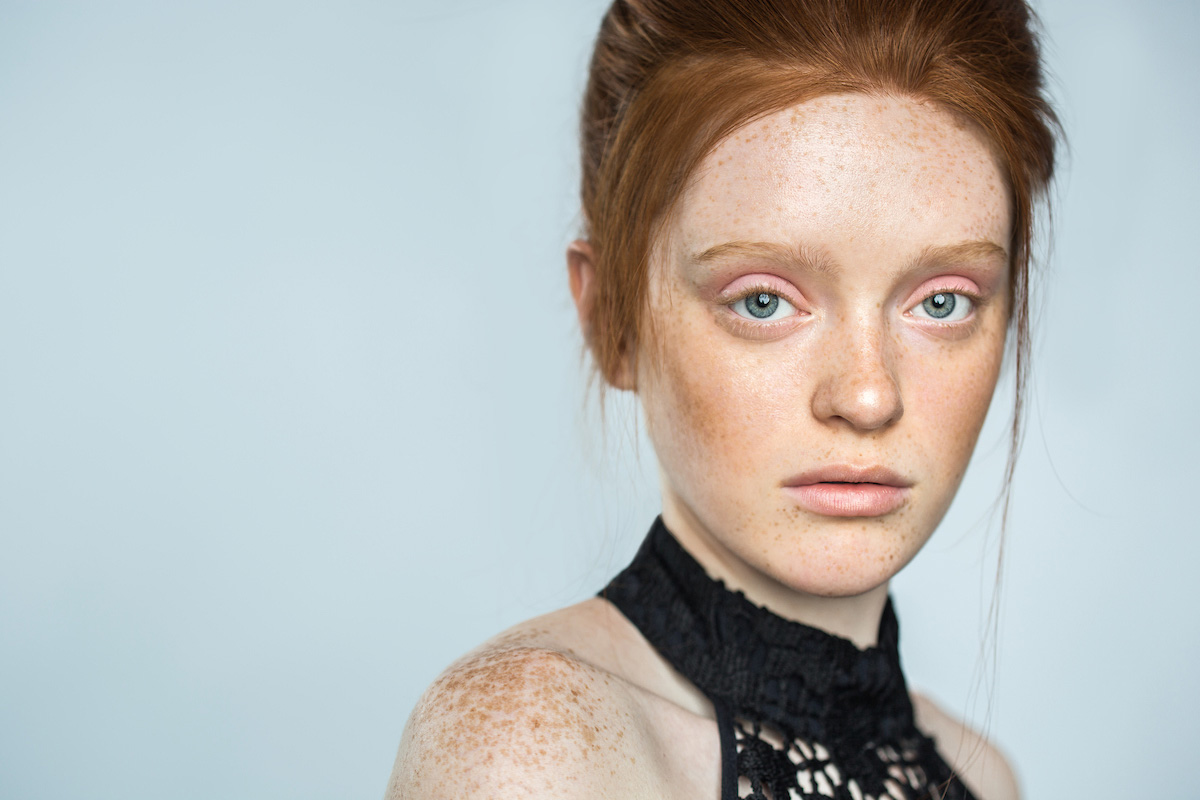Portraits With Jeff Rojas: 'Refined Simplicity'
Men's and women's portraiture with the Tamron SP 90mm VC Macro and SP 24-70mm lenses.
By Jenn Gidman
Images by Jeff Rojas
Ask Jeff Rojas to describe his approach to his commercial and portrait work, and the New York photographer doesn't hesitate. "Minimalistic with a refined simplicity," he says. "I love attention to detail with singular lighting. That way, as I'm interacting with my clients and models, I'm not distracted by overly complex lighting setups."
Jeff photographs both male and female portraiture, but no matter which gender he has before his camera, how they interact and how the final image emerges depends on each subject's personality. "I treat every model as an individual," he says. "Before we start the shoot, I'll ask: 'What do you like to do? What are you passionate about?' That strikes up a conversation and allows me to establish rapport."
With guy models, he's ended up in chats about everything from dirt-bike riding, mountain climbing, or whatever other exploits they've got under their belt. For the women, he's kicked back with everyone from professionals starting their own fashion label to techies wanting to create apps for iPhones. "It doesn't matter where the conversation goes, though—just make that connection, and it will come through in your images," he says.
The two Tamron lenses Jeff uses to achieve his signature look: the Tamron SP 90mm VC Macro and the SP 24-70mm VC. "Versatility is important to me as a photographer, and that 90mm Macro is one of those lenses for portrait sessions that allows me to photograph someone full length, and then, because of its close focusing distance, lets me move in on my subject so I can get close-up images with details," he says. "Meanwhile, the 24-70 is my go-to travel lens for when I have to shoot on location."
Jeff never turns the Vibration Compensation (VC) off on either lens. "It's so precise when I'm shooting close-ups," he says. "I can have a very shaky hand when I'm holding up a camera. The VC allows me to balance everything a bit better and keep my images sharp."
Jeff often employs black and white, not only to evoke a timeless feel, but also so he can pay better attention to the lighting. "It can be difficult as a photographer to judge light based off of color images," he explains. "Because you're so focused, your eyes bounce off of all the different colors and variations. So I'll often shoot in-camera in black and white, even though I'm photographing in RAW, just so I can see how light works in that specific scene. Then I'll color-balance the image in post-production—though often I'll end up liking it better in black and white anyway, making it somewhat of a self-fulfilling prophecy."
For a black-and-white image he took of one of his male models with the 24-70, Jeff wanted to create a challenge for himself. "I often place myself in predicaments that might make other photographers uncomfortable," he says. "I'll purposely do test shoots to challenge my 'expertise.' When you start teaching photography, people may assume you know everything about your subject, which isn't the case whatsoever. Pushing yourself to overcome obstacles helps you learn to shoot better."
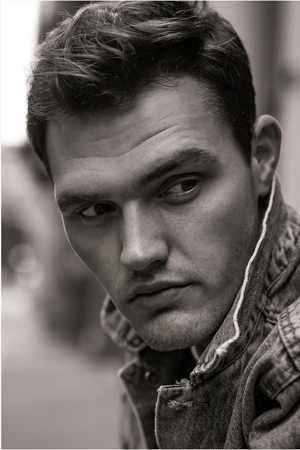
Jeff carried that black-and-white feel over to a fitness image he captured, one of a series of images used for a lighting-setup book he was working on. "We looked through some old fitness photos for inspiration and came across these gorgeous images of men lifting weights," he says. "They were using all of this heavy powder to lift. I somewhat replicated that, but instead of the three-point lighting system used in those images, I kept it more basic. I placed my model in front of a black backdrop and used a grid on him just to define his features, then a grid from behind with a beauty dish to accentuate all of the powder (which was baby powder, by the way)."
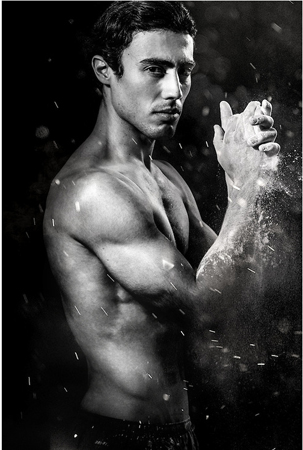
In addition to his inspiration quests, Jeff taps into his models' body language to craft eye-catching photos. "One model I photographed came from Korea to the US, and we spent some time chatting about life and how things were back home, and the whole time we were talking I also tried to figure out the perfect angle and lighting for him," he says.
The lighting for this image ended up involving what used to be one of Jeff's studio workhorses. "I had this giant, 59-inch parabolic softbox in a studio that's only 1,200 square feet," he says. "It was somewhat dangerous to take apart because of all of the different parts, so I just left it on set and used it over and over, for about a year, until I finally decided to switch things up."
After Jeff had put together his setup for this image, that's when the body language came into play. "Posing can do a great job at enhancing (or de-emphasizing) a subject's features, but body language says a lot about a person," he notes. "It communicates to me what they're trying to convey." For the final result, Jeff says the model's stance happened organically as they were chatting. "I then ended up seeing similar poses appear on the front covers of Esquire and GQ," he says. "There's something to be said for a candid photo."
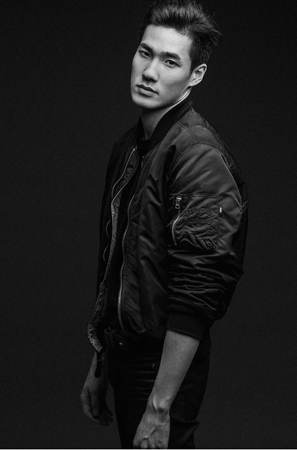
Part of capturing a model's essence is not shying away from what makes him or her unique. "A model who's become a good friend of mine is graced with these beautiful freckles," Jeff explains. "I don't like how the media often covers up physical attributes like these. And, on the flip side, some companies do something similarly obnoxious and add things like freckles in. The key is to show your model for who he or she really is."
.
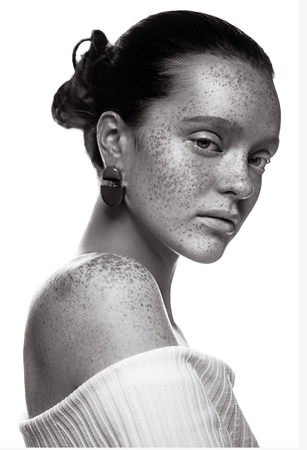
For the image of his friend, which was set up to show how to accent beauty with flash, Jeff placed a softbox behind her, with a beauty dish with a grid on her face to accentuate her cheekbones, define her jawline, and show off her shoulder. "I also had a reflector underneath just to fill in the shadows," he says. "It was a fairly simple lighting setup, but it provided a lot of dramatic effect. Then, in post-production, I enhanced some of the freckles to make them look like what they look like in person, mainly because the light washed out some of the contrast."
When his on-the-books shoots are completed, Jeff makes sure he's out and about doing spec work. "As a portrait and commercial photographer, I'm always looking for the next job," he says. "I shoot work in order to be hired, so if I want to be hired to shoot a specific concept, I'll shoot that concept on my own, then mail that concept out to show I can execute it." For an image he took in Toronto, he decided to create a few jewelry mockups to use for spec ads. "I photographed this model as simply as possible, with only a beauty dish and reflector," he says.
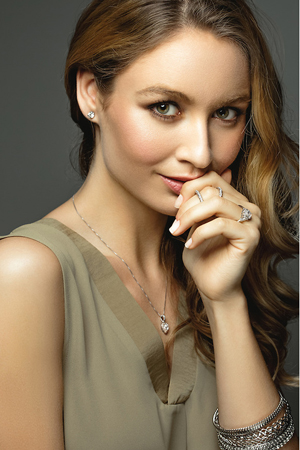
Collaboration is one of the parts of his job that Jeff enjoys most, especially when it comes to working with makeup artists. "They come to the table with so much creativity," he says. "Photographers often take credit for all of the shots they take, but I respect my team enough to give them some leeway to roam free and let their imaginations run wild. My job then becomes trying to find the lighting that will enhance that specific shot in the way they're envisioning it."
For one image Jeff recently captured, he was once again inspired by another artist's work—this time, the photographer Albert Watson's "Golden Boy" photo. "I told my makeup artist I wanted to create something similar to that, so she designed a concept based off that image," he says. "For lighting, I used a beauty dish, with a grid from behind. The image ended up running in Elle in a different country."
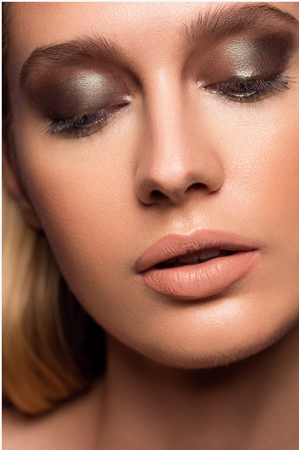
Jeff says the entire shoot for the eight-image editorial took 45 minutes. "My makeup artist is a single mom with three kids, so I always try to make the shoots as efficient as possible," he notes. "But they're always collaborative. I let her have her fun, I photograph what she's done, and the final product is a combined effort between two creative people."
To see more of Jeff Rojas' work, go to www.sajorffej.com.
